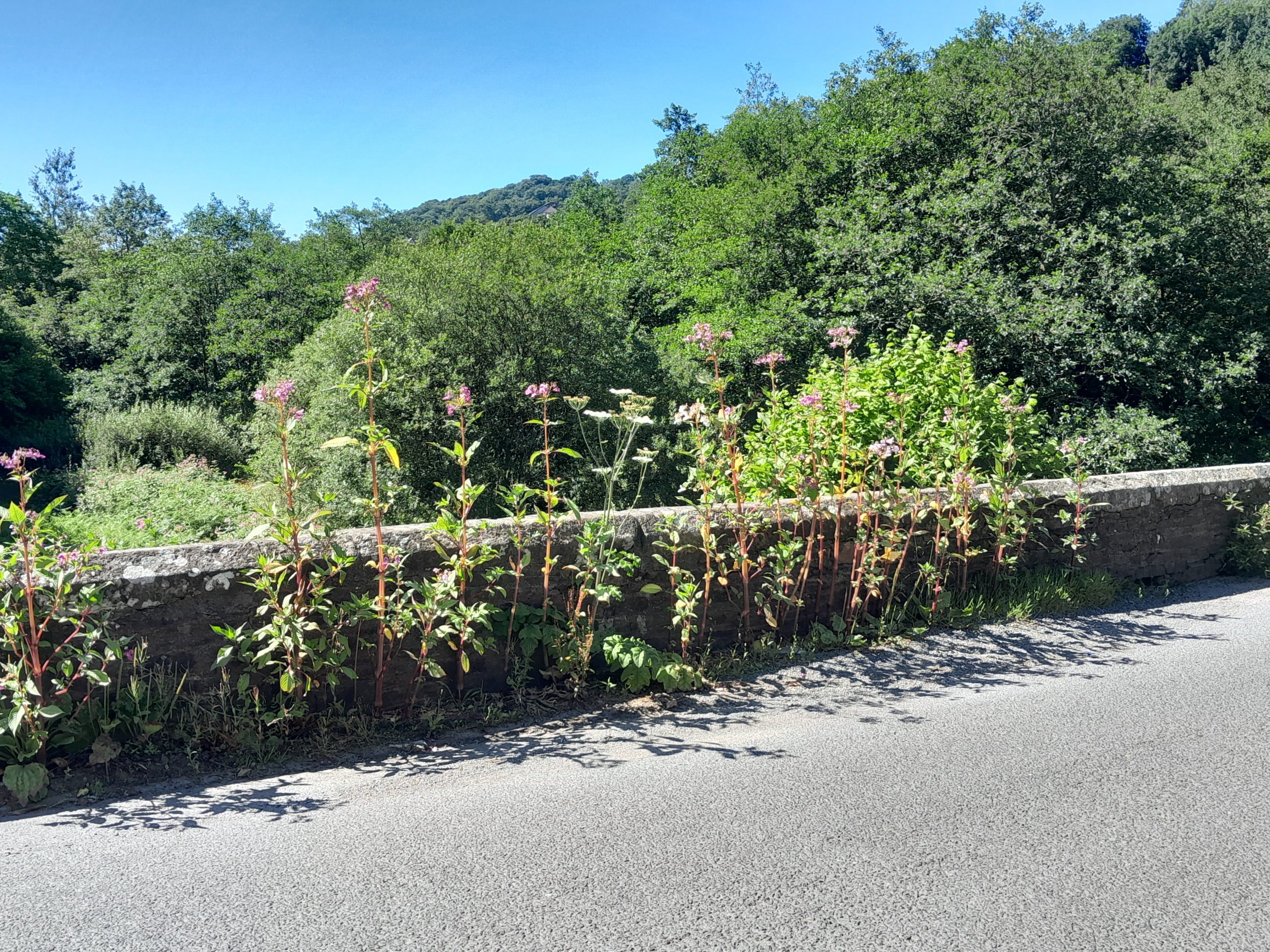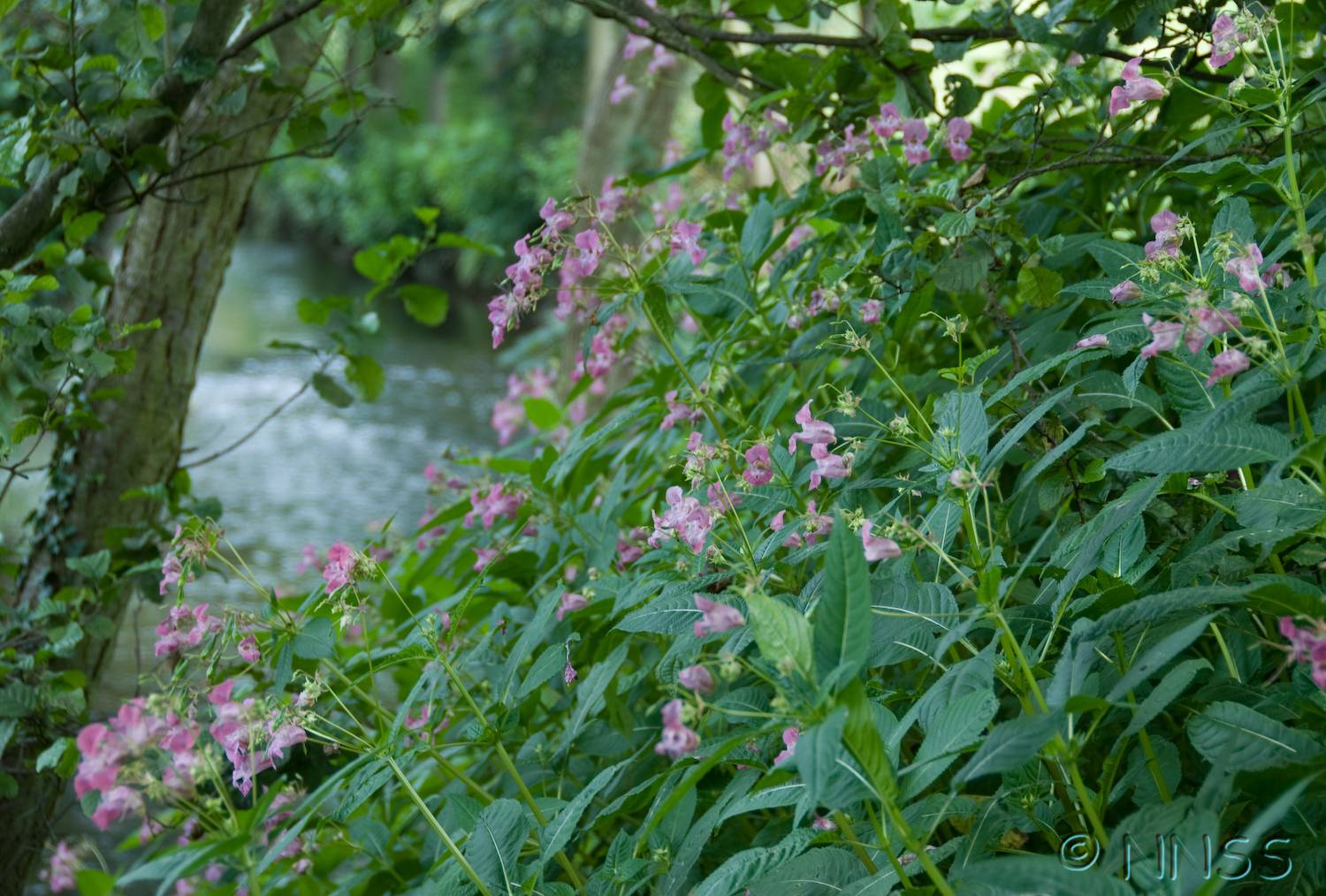Himalayan Balsam
Himalayan balsam is listed under Schedule 9 to the Wildlife and Countryside Act 1981 with respect to England and Wales.
As such, it is an offence to plant or otherwise allow this species to grow in the wild.
More information and downloadable ID sheet
Introduced as a garden plant in the early 19th century and now widespread in the UK, especially along rivers and roads. Often favoured by the general public for its aesthetic appeal and as a nectar source by beekeepers, but Himalayan balsam out-competes native species in ecologically sensitive areas, particularly river banks. Where it grows in dense stands along river banks it can impede flow at times of high rainfall, increasing the likelihood of flooding. Die back of extensive stands over winter can leave river banks bare and exposed to erosion.
With support from the Water Environment Improvement Fund, in 2025 we will undertake a pilot project to assess other sub-catchment approaches that have worked elsewhere with the aim of building a means of working with landowners in a single water body to take, or enable sustained action to be taken, to effectively and efficiently manage Himalayan balsam.

